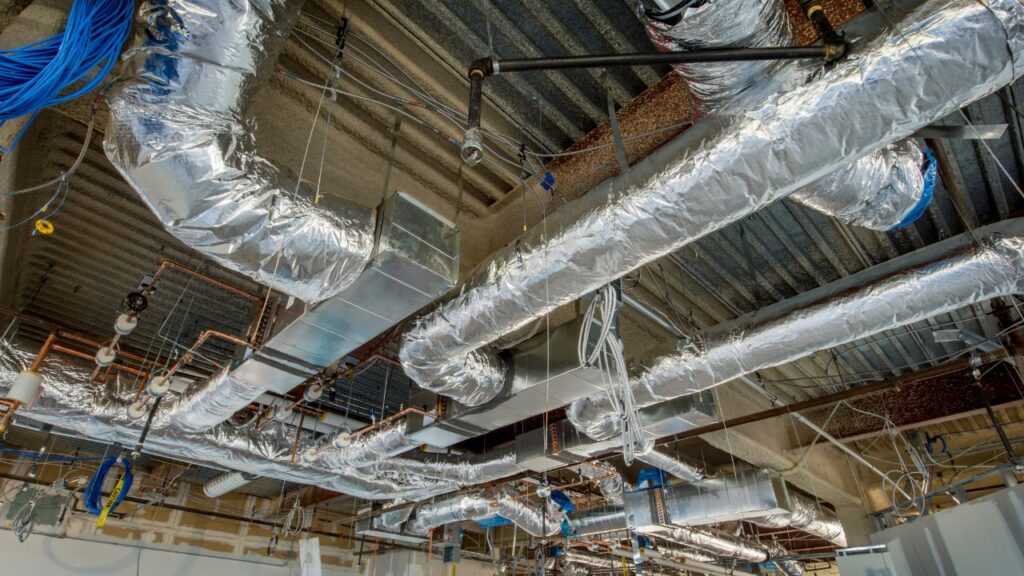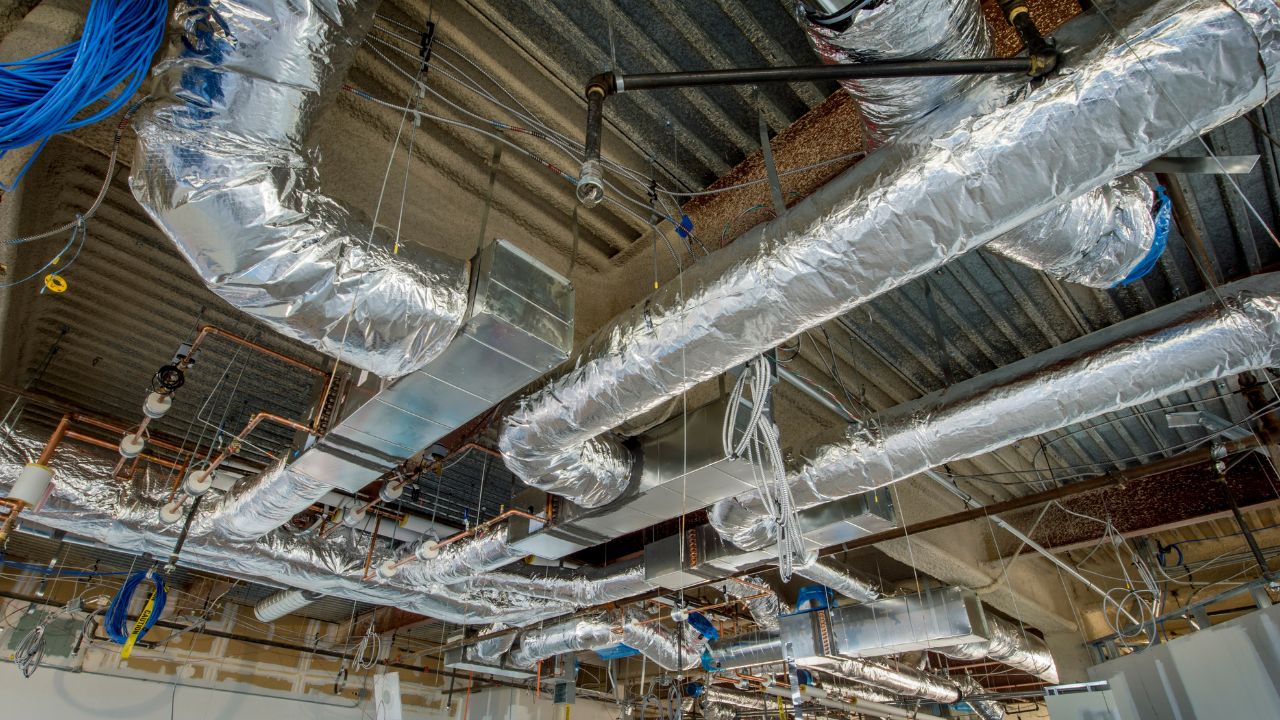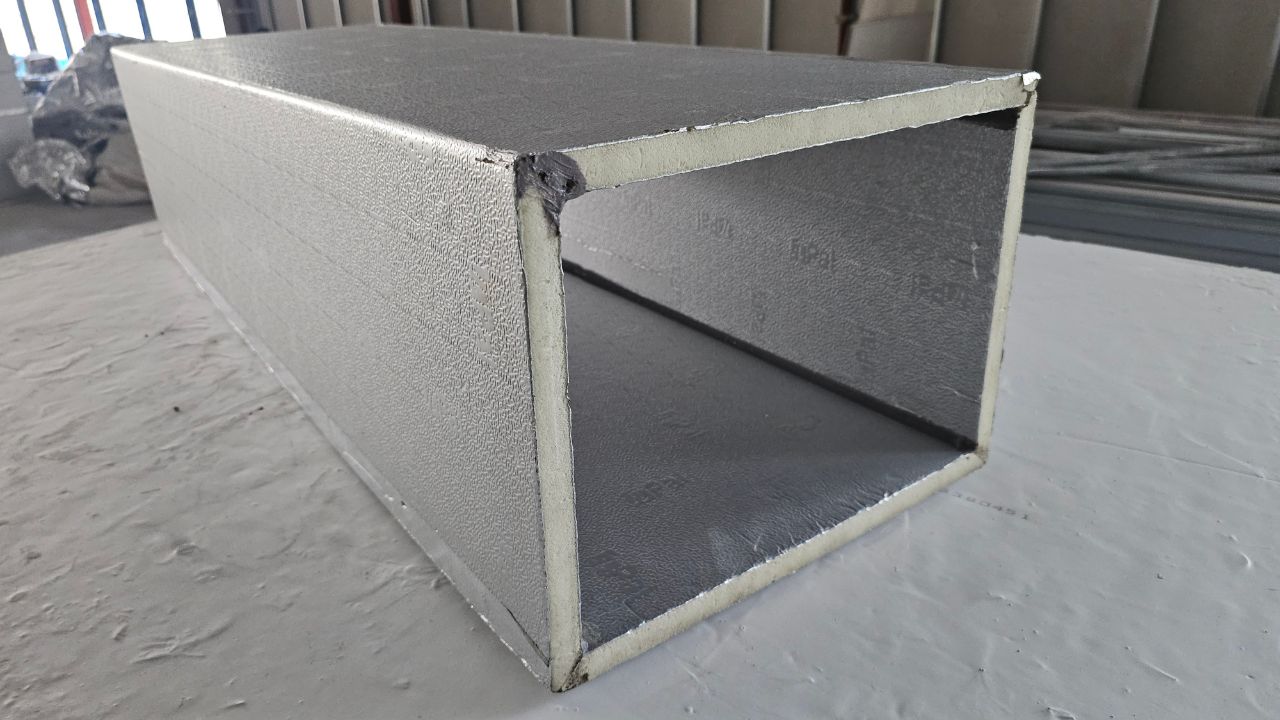In the world of HVAC system design and installation, selecting the right type of ducting is crucial for performance, cost efficiency, and installation feasibility. While galvanized metal sheet ducting remains the conventional choice, PID ducting (Pre-Insulated Ducting) has emerged as a popular alternative, especially in urban environments like Singapore where space constraints and construction speed are key considerations.
This article explores the differences between PID and traditional metal sheet ducting in terms of installation, performance, cost, compliance, and application suitability.
1. What is PID Ducting?
PID (Pre-Insulated Ducting) refers to ductwork fabricated from rigid panels consisting of an insulating foam core (typically phenolic, PIR, or polyurethane) sandwiched between aluminum foil facings. These panels are cut and assembled to form duct sections without the need for external insulation.
2. Comparison Table: PID vs. Metal Sheet Ducting
| Feature | PID Ducting | Metal Sheet Ducting |
| Material | Pre-insulated phenolic/PIR panels | Galvanized steel or stainless steel |
| Insulation | Built-in, no external insulation needed | Requires external insulation (e.g., fiberglass, Kflex, Armaflex) |
| Weight | Light (~10–20% of sheet metal weight) | Heavy |
| Installation Speed | Fast (less fabrication and labor required) | Slower (multi-step process) |
| Thermal Efficiency | High – minimal thermal loss | Good, depends on quality of insulation |
| Condensation Control | Excellent – seamless surface and vapor barrier | Risk of condensation if not properly insulated |
| Acoustics | Good noise reduction if using acoustic PID panels | May require acoustic lining |
| Aesthetics | Sleek and uniform finish | Industrial appearance |
| Cost | Higher material cost, but lower labor | Lower material cost, higher labor & insulation |
3. Installation Efficiency
In Singapore’s tight ceiling voids and congested M&E spaces, the lightweight and compact nature of PID ducting makes it a highly efficient solution. It eliminates the need for separate insulation works, reducing:
- On-site labor time
- Installation height (critical in low-ceiling developments)
- Risk of insulation damage during construction
This makes PID ideal for commercial offices, hotels and retrofits where coordination and speed are essential.
4. Performance and Condensation Control
PID ducting offers built-in thermal insulation and an integral vapor barrier, which significantly reduces the risk of condensation, a major issue in Singapore’s humid climate. Traditional metal ducts rely on external insulation, which is prone to:
- Gaps or damage during installation
- Aging and sagging over time
- Increased condensation risk if vapor barrier is compromised
5. Applications and Limitations
PID Ducting is best suited for:
- Indoor supply and return air ducts
- Retrofit works
- Projects where weight and space are critical
Metal Sheet Ducting remains preferred for:
- High-pressure systems (e.g., kitchen exhaust, smoke extraction)
- External duct runs (UV and weather-resistant)
- Heavy-duty mechanical systems
Conclusion
Both PID and metal sheet ducting have their roles in modern HVAC design. The choice depends on project requirements, regulatory compliance, and installation conditions. PID ducting offers a faster, lighter, and more thermally efficient solution, making it a smart choice for many projects in Singapore’s dense urban environments. However, metal ducts remain essential for high-pressure and fire-critical applications.




